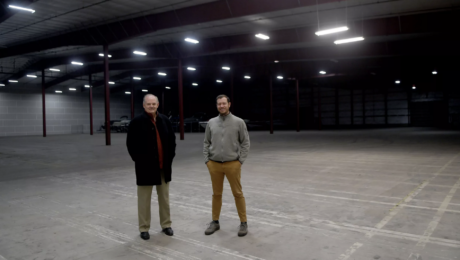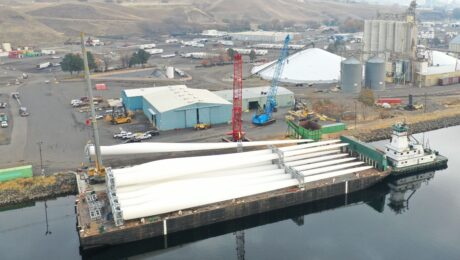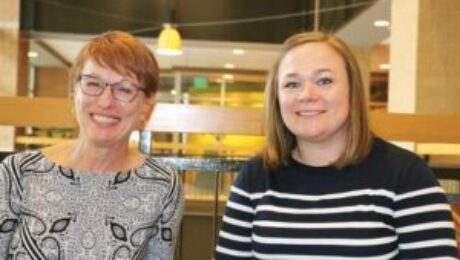February 11, 2022 (FAIRFIELD, Wash.)—Inland Northwest Partners (INP) is pleased to announce that a new executive director has been appointed. KayDee Gilkey comes to INP with more than 30 years of service to nonprofit boards on a local, regional, and state level, and is former two-term mayor of the Town of Fairfield, Washington. Gilkey is the economic development organization’s second director and assumed her position earlier this month. She succeeds Sharon Matthews, who held the position for 25 years. Matthews retired at the end of 2021.
Gilkey will concurrently remain as Directory of Industry Relations for the Washington State Beef Commission. She currently serves on the Liberty Community Education Foundation Board of Directors and serves as chapter advisor to WSU’s Alpha-Gamma-Delta chapter.
“We are so pleased to have KayDee joining us at the INP. Her expertise in non-profit leadership coupled with her passion for economic and community vitality is the perfect combination to help our organization succeed and support our mission, notes INP Board Chairman and Avista Regional Business Manager Paul Kimmell.
Inland Northwest Partners originated in 1986 as an in-house Avista economic development program and became an official non-profit corporation in 1996. In 2004, the organization developed the Inland Northwest Economic Alliance to better support community and economic development professionals from across the Inland Northwest. INP members meet quarterly to share common economic challenges and solutions within the eastern Washington and northern Idaho region. Topics include technology, financing community initiatives, forging regional partnerships, civic capacity-building, business expansion and retention strategies, and talent attraction. INP often partners with local chambers or state organizations for value-added training.
“Sharon was the consummate professional leading both organizations effectively for so long. Our Board and the entire region deeply appreciate her efforts and the positive economic impacts she helped foster here,” Kimmell said.
For more information about INP meetings or becoming a member, visit inwp.org or email [email protected].
Inland Northwest Partners (INP) is a non-profit organization focused on enhancing the long-term vitality of a two-state region through its core offering of educational meetings, programs and seminars. More than 300 business and community leaders from eastern Washington and northern Idaho are members. INP is also part of a regional collaborative known as the Inland Northwest Economic Alliance (INEA), a consortium of fourteen economic development agencies. To learn more, visit inwp.org.
This article first appeared in the Spokesman Review on May 21, 2021. By Amy Edelen [email protected](509) 459-5581
Kootenai County companies saw an uptick in investment despite the pandemic last year, according to a recent report by the Idaho Technology Council.
The council’s 2020 Idaho Deal Flow report, released earlier this week, tracks private funding, public market transactions and mergers and acquisitions.
North Idaho had 10 company mergers and acquisitions and 26 private investment deals last year totaling $164.3 million, according to the report.
Companies in Kootenai County garnered more than $67.7 million in funding from investors last year.
Ryan Arnold, director of regional entrepreneurial strategy at North Idaho College, said Thursday that 2020 was an interesting year for North Idaho’s business community.
At the onset of the pandemic, the region’s startup activity was expected to decrease, but the opposite occurred as more entrepreneurs took risks and developed business ideas, Arnold said.
“We saw an uptick in entrepreneurship activity,” he said.
North Idaho is now on the map as a viable area to obtain funding and conduct business, in part, because of its proximity to Spokane, Seattle and Boise, Arnold said.
“Overall, it feels like a good time to be here,” Arnold said.
Statewide, the number of investment deals dropped slightly to 151 last year, compared with 154 in 2019. However, the overall amount of capital invested increased to $5.2 billion last year from $4.4 billion in 2019.
Coeur d’Alene-based Tractor Beverage Co. last year was among the state’s top 10 private placement deals, a round of investment through a private offering . The specialty soda company completed an $18.5 million round of venture funding from investors in 2020.
“Our equity raise completed in April 2020 has enabled Tractor to continue its growth in the industry and helped us achieve a 475% increase in revenues in 2020,” Dan Kerker, CFO of Tractor Beverage Co., said in an email.
Seven Kootenai County-based companies raised more than $1 million in funding last year. GarageSkins Inc. is one of those companies, raising $1.2 million in December in a deal led by Central Texas Angel Network.
GarageSkins founder Rick Medlen moved from Oregon to Liberty Lake last year and is leasing 60,000 square feet of space at 5405 W. Riverbend Ave. in Post Falls for a new production facility, with plans to take the company’s garage door overlay system to market in July.
Medlen developed a concept of thin, wood veneers adhered to lightweight foam that attaches to metal garage doors via strong earth magnets, transforming the appearance to high-end wood carriage doors without need for alterations.
“I have found North Idaho to be incredibly welcoming to new businesses,” said Medlen, adding the business community has been supportive of the company’s production facility.
It’s been typical to see late-stage funding for North Idaho startups, meaning established companies are receiving larger amounts of investments, Medlen said.
“Companies showing true growth and great year-over-year increases can expect a ready investor market,” he said.
For the last few months, the Port of Lewiston has become an important transportation center for wind turbine components being barged up the Columbia and Snake rivers. After being barged from Port of Longview, in Washington, to the Port of Lewiston, the components will be trucked to Alberta, Canada.
Because the Port of Lewiston is at the end of the navigable Columbia Snake River System, it serves as a transportation corridor for commodities exported from Idaho or cargo imported to the interior of the U.S. and Canada.
The wind turbines are shipped in pieces to the Port’s dock, which was expanded as part of a 2013 capital investment project made possible by federal and state grants, and then trucked north using U.S. Highway 95 to the Canadian border. The wind turbine components will be assembled to make 42 new wind turbines.
The Port of Lewiston is an advocate for renewable energy sources such as hydroelectric power as well as wind power. Wind turbines work to harness the power of the wind and turn it into energy. When the wind blows, the turbine’s blades spin clockwise, capturing energy. This triggers the main shaft of the wind turbine, connected to a gearbox to spin. The gearbox sends that wind energy to a generator, converting it to electricity. Wind power generation helps to create a clean, renewable way to power our world.
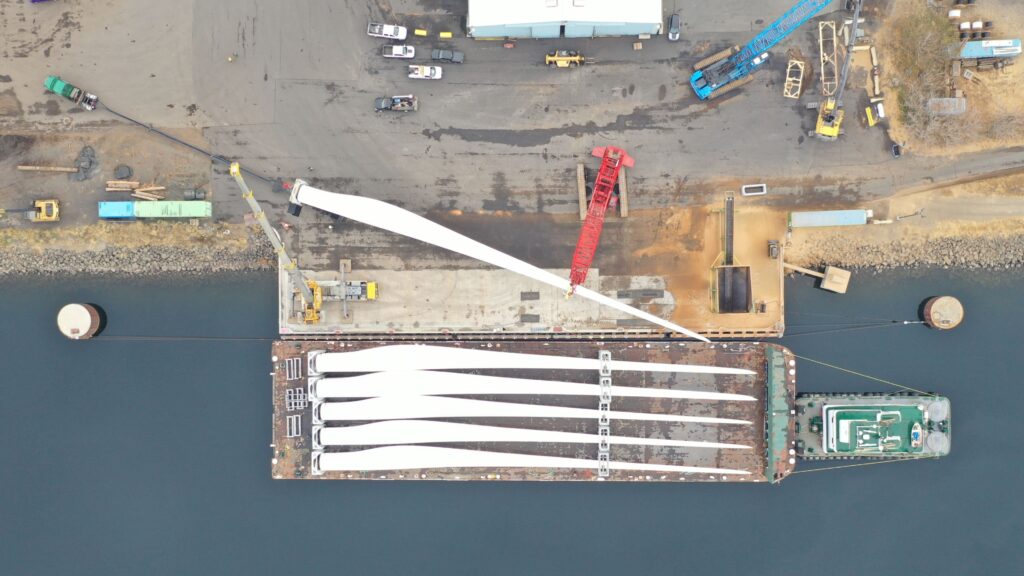
Both blades and tower components have been barged and stored on Port property before being trucked to Canada.
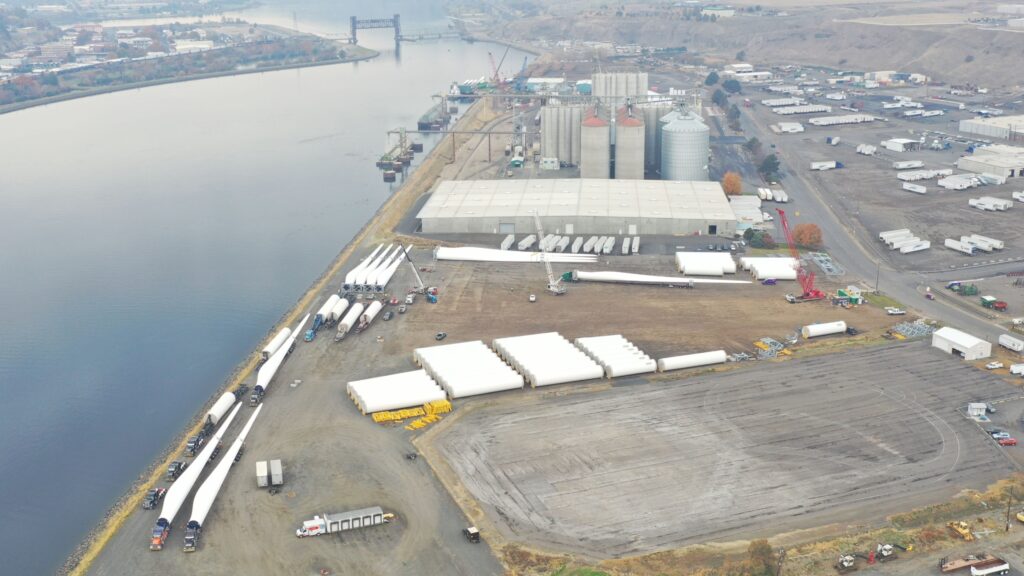
126 turbine blades and 168 tower components have been shipped on 21 barges of this project.
This project is important to so many, especially during this COVID-19 time. The crew that is shipping these turbine components was mobilized to our area and is helping to fuel the local economy. The Port of Lewiston is a public organization serving the citizens of Nez Perce County as an economic development district, intermodal transportation center and facilitator of international trade.
“The success of this inland shipping route will foster future opportunities for the Port of Lewiston and the Valley as a whole,” General Manager, David Doeringsfeld, commented.
This article first appeared on October 8, 2020 in the Journal of Business. Written by Natasha Nellis.
Company to boost sales, engineering jobs this year
Tamarack Aerospace Group Inc. is continuing its rapid expansion, having nearly tripled its space at its Sandpoint headquarters.
The company has added 3,500 square feet of office space and an additional hangar to its 14,000 square feet of space at 2021 Industrial Drive, near the southern edge of the Sandpoint Airport. The addition of a third hangar, which company President Jacob Klinginsmith estimates is about 5,600 square feet, brings the company’s total hangar space to roughly 23,000 square feet.
“The big-picture objective with the expansion is making room for R&D,” he says. “As a technology company our intent and plan is to take our game changing technology and do it on other platforms.”
The company manufactures and installs active winglets, which are designed to be attached to wingtips to boost fuel efficiency by increasing lift and reducing drag.
Currently, the winglets are designed to be installed on Cessna CitationJets, but Klinginsmith says Tamarack is exploring expanding the product to fit other types of aircraft, from the CitationJets up to Boeing airplanes.
With the addition of more research and development space, the company also plans to hire five sales and engineering employees, with the expectation of hiring an additional five engineers by year-end, according to a company press release.
Tamarack has 27 employees.
Klinginsmith declines to disclose sales figures, but says he expects this year’s sales will be up compared with last year.
“The economy has really increased the demand for charter flights,” he says. “People are looking for less contact with others, so our charter customer base is growing. People are looking at adding winglets to get more out of their aircraft.”
He adds that the increasing popularity of charter flights has bolstered the company’s sales.
Earlier this year, the company also established its first international outpost at the London-Oxford Airport. Tamarack partnered with Jet Maintenance International, an airline-based asset management company based in Alexandria, Virginia, to lease an 18,000-square-foot hangar on the airport property.
First published in the Journal of Business, June 4, 2020. By Kevin Blocker.
Not even the COVID-19 pandemic has been able to blunt the tide of growth the design-build construction company Verdis is experiencing.
Since becoming a member of the Small Business Administration’s 8(a) Business Development Program in 2016, Verdis has secured 99 federal projects, 19 of which are currently active, says Sandy Young, founder and principal of the Coeur d’Alene-based company.
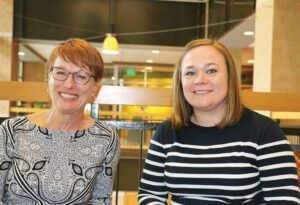
Verdis founder and principal Sandy Young, left, sits with senior planner Stephanie Blalack in the company’s offices in the Parkside Tower, in downtown Coeur d’Alene.
The 8(a) program is a nine-year business development program that provides business training, counseling, marketing, and technical assistance to small businesses that have applied and then been accepted to the program.
Verdis has a greater ability to secure federal work with certifications as both a woman-owned business and an 8(a) operation. The federal government’s goal is to award at least 5% of all federal contracting dollars to small businesses and women- and minority-owned businesses.
Now doing business in 13 western states, Verdis recently secured its largest federal contract to date, an almost $4 million project in Alaska, where Young is from originally.
A 7.1-magnitude earthquake that struck south central Alaska on Nov. 30, 2018, continues to generate engineering and construction repair work through the federal pipeline.
Despite the flourishing federal work, Young says one of the requirements of 8(a) status is to maintain local work in the community. While she declines to disclose the firm’s annual revenue, she says close to a third of all income is generated by local projects.
Deemed as an essential business, Verdis anticipates annual revenue to double in 2020 over 2019. First-quarter revenue alone this year exceeded calendar year 2019, she says.
The company forecasts a nearly four-fold increase in revenue by 2022, compared with 2019 earnings, Young says.
“We’ve been able to self-perform much of our work, which is a big deal for an 8(a),” she says. “Very few firms do both engineering and construction. We seal fish ladders, rip up rails in powerhouses at dams, and restore old buildings and windows.”
With 25 employees, Verdis occupies roughly 2,000-square feet of space in a second-floor suite at Parkside Tower, located at 601 E. Front. It’s the company’s fifth location since its founding in 2007, Young says.
A vice president of construction, Colin Meehan, oversees five project superintendents and six members of a field-personnel team, constituting the firm’s largest concentration of employees.
Young, who is 64, moved to Idaho from Alaska in 1997 and spent the next decade working in Kootenai County’s community development department. Along the way, she met her late husband, Gary, who worked as the director of community development for the city of Post Falls, she says.
The two married in 2006, and the following year, Young says the couple began the process of going into business for themselves.
“He had been in business for himself for a while; he was a licensed landscape architect,” she says. “He’d say, ‘It’s not as easy you think, not every hour is billable.’ I remember sitting on a plane—we were going on a trip somewhere—and telling him, ‘Let’s do it.’’’
In the basement of a building in Post Falls, the couple set up an independent development and planning operation.
“Fortunately, because of our public-sector jobs, people knew us,” she says. “There weren’t many planners around, so we got a few clients right out of the gate.”
Young says the company steadily grew. Landscape architecture work quickly expanded, and Verdis began using subcontractors for civil engineering projects.
In 2012, Verdis was granted woman-owned business status through the SBA, but the business didn’t qualify for the 8(a) program due to the couple’s combined assets, she says.
Then, in 2014, Gary Young contracted cancer and died the following year. It was his death that allowed Verdis to qualify for 8(a) status, she says.
“On his death bed he said, ‘Get the 8(a). I want you to kill it. I don’t want to have to worry about you,’’’ Sandy Young says, fighting back tears.
Reflecting on that time, Young says the business took off as she poured herself into work as way to deal with the grief.
“That wouldn’t have happened if I would’ve had a spouse at home, right?” she asks rhetorically. “Who doesn’t want to be home at night?”
Young says she bought a new car and “hit the road” religiously in an effort to generate new business.
“Honestly, it seemed like such a longshot because you’re sitting there trying to sell your capability, and I really didn’t understand the world I was in,” she says. “We didn’t have any idea how to put a bid together, we didn’t know what we were going to do. We were designers.”
As Young tried to recruit clients, she was asked if Verdis did construction work. Upon answering no, she was met with a consistent message: Come back when you do.
“Three times I heard that. The fourth time I was asked, my answer was, ‘You bet we do,’’’ she says. “I came back and told staff we’re going to figure this out.”
A year later, Verdis secured its first federal contract, a $327,000 Kachess River Bridge project in Cle Elum, Washington, Young says.
Stephanie Blalack, a senior planner with Verdis, has a perspective about Young and the firm, unlike any other employee. She is the company’s first hire.
“I hired Steph out of college (2004) when I still worked for Kootenai County,” Young says. “When I jumped ship, I brought her with me.”
Says Blalack, “She was a phenomenal boss at the county, so when she left in 2007, I was just devastated.”
Seven months later, Young reached out to her with a job offer.
“I was 25, 26, and I’m thinking of leaving my government job? My parents were like, ‘Are you crazy?’’’ says Blalack.
“But I just had this feeling that I knew she was going to make it,” she says. “If it were anybody else, I would not have left my government job.”
Contact author at [email protected] or 509.344.1267
Opportunity Zones are a community development program established by Congress in 2017 to encourage long-term investments in low-income urban and rural communities. Private investment vehicles that place 90% or more of their funds into an Opportunity Zone can earn tax relief on the capital gains generated through those investments. Tax benefits increase the longer investments are in place.
An Opportunity Zone is a community nominated by the state and certified by the Treasury Department as qualifying for this program. See which communities are certified by looking at this interactive map.
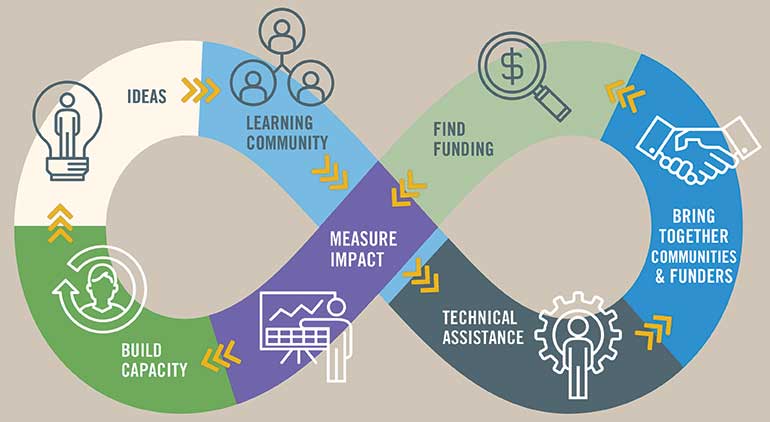
For specific information on Opportunity Zones in Idaho, click here.
For specific information on Opportunity Zones in Washington, click here.
The following projects, initiatives, and economic developments are making news in eastern Washington and northern Idaho. This release is distributed by the Inland Northwest Economic Alliance on behalf of its regional partners.
*************
COEUR D’ALENE, Idaho — StanCraft Boat Co. is expanding from manufacturing watercraft to offering aviation services with the addition of a $15 million StanCraft Jet Center at Coeur d’Alene Airport-Pappy Boyington Field. Construction on the new 85,000-square-foot FBO began in August east of Empire Aerospace, and the project is expected to be completed by May 2020. Coeur d’Alene-based Eric Hedlund Design is the architecture firm that designed the structure, and Hayden-based Young Construction Group of Idaho Inc. is the contractor. The 40,000-square-foot Southfield Aviation building will be used as a maintenance facility after the new jet center is built. In addition to refitting jet interiors, StanCraft Jet Center will offer jet refueling, conference rooms, waiting and pilot areas, and a tenant improvement space for offices. Contact Robb Bloem, StanCraft President, for more information.
Dauntless Air, an aerial firefighting company, relocated its aircraft maintenance operations to the Coeur d’Alene airport this year. Dauntless protects people, land and property from the devastation of wildfires through advanced aerial fire suppression tactics in Minnesota, Washington, Alaska, Idaho, North Carolina, California and Oregon. Learn more about the company at www.Dauntlessair.com or contact Brett L’Esperance, Dauntless CEO.
PULLMAN, WA — Washington State University’s Cosmic Crisp apple will hit the fruit stands on December 1, a project over 20 years in the making. Cosmic Crisp was developed specifically for Washington’s climate and growing conditions. WSU researchers combined the disease-resistant Enterprise with the Honeycrisp, known for its crispness, juicy sweetness, and hint of tartness. There are 12 million trees planted in the state of Washington and this year 450,000 boxes of Cosmic Crisp apples will be available. Washington apple growers will have exclusive rights to the Cosmic Crisp for 10 years. Washington produces 65-75 percent of the nation’s apples, yet this is the first variety that originated from the state. Contact Proprietary Variety Management for more information.
HAYDEN, Idaho — Roller coaster manufacturer, Rocky Mountain Construction (RMC), continues its Six Flags success with the innovative Jersey Devil Coaster at Six Flags Great Adventure in Jackson, New Jersey. Known as a single-rail coaster, riders in one-passenger cars will straddle a 15.5-inch-wide steel, monorail track and navigate a twisted course that will include multiple inversions, climbing 130 feet and hitting a top speed of 58 mph along 3.000 feet of monorail track. RMC has grown to 115 full-time employees and 5 manufacturing facilities, totaling more than 75,000 square feet. See USA Today’s article for more.
DAVENPORT, WA – Washington Department of Commerce, USDA, and Washington State University Medical School hosted a daylong workshop with 100 community leaders and residents from Eastern Washington to address the broadband law approved this year by Washington state lawmakers. A new statewide broadband office will approve and distribute grant and loan funds to local governments, tribes, public, private and nonprofit entities working together to expand broadband. The program has $21.5 million available, including $14.5 million for loans and $7 million for grants. The state will prioritize funding to public-private partnerships, with a focus on underserved areas in the state. Contact Margie at Lincoln County EDC for more information.
<ol
MARIES, Idaho — City officials and housing developers, Troy Lozano, are projecting construction of new homes in Ragan’s Addition to begin in early 2020. Lozano purchased 21 lots in the addition and plans to partner with Julian Construction to build single family homes. Updates can be found at greystonehill.com.
OTHELLO, WA — McCain Foods broke ground on a 170,000-square-foot expansion, a project that will cost $300 million and is scheduled for competition in 2021. The expansion to the frozen potato products line is estimated to bring about 180 new jobs to Othello and is expected to be the biggest manufacturer of frozen potato products in the world. Dale McCarthy, McCain Foods, said Othello’s proximity to West Coast shipping makes it a crucial location for the company. “Othello is very strategic for us.” Adams County officials are working with McCain Foods and the state to develop a recruitment process and support. They plan to conduct a countywide housing needs assessment to confirm housing needs and development solutions. Email Adams County Economic Development Council for more info.
MOSCOW, Idaho — Northwest River Supplies (NRS) began operations from its new facility on South Blaine Street on November 5. The newly constructed 155,000-square-foot building includes a warehouse, customer service center, corporate offices and a 3,500-square-foot NRS flagship retail store. The $13.5 million project received a tax break from Latah County that exempts 75 percent of the increase in the site’s value from property taxes for five years, ending in 2023. Read more here.
PULLMAN and COLFAX, Wash. — Two Inland Northwest businesses were recognized through the Washington Secretary of State’s Corporations for Communities Award Program. Schweitzer Engineering Laboratories, of Pullman, was recognized for donating and raising funds for local charities and providing money for employees to donate to the charity of their choice. Bunyard Automotive, of Colfax, was honored for repairing vehicles at little to no cost for families in need. Both businesses were awarded the National Association of Secretaries of State Medallion for their efforts in their communities. The full press release is here.
OSBURN, Idaho — The city dedicated the newly completed Shoshone Fire District #1 facility, which was awarded a $500,000.00 block grant earlier this year. The new 10,000-square-foot facility is a significant fire, training, and emergency services upgrade for the region. Contact Silver Valley EDC for more information.
LEWISTON, Idaho — With a start-up $839,809 grant from the National Science Foundation, the Northwest Intermountain Manufacturing (NIMA) Association has created a pilot project to train high school students in fabrication and machining. In partnership with Lewis-Clark State College, the Clearwater Economic Development Association, the University of Idaho and 16 school districts, the program gives students a solid skill set and educational background in manufacturing so they can be ready to start work right after high school for local companies. The first group of students will complete the program in 2020. See Idaho Department of Labor article here.
LIBERTY LAKE, WA — In response to a gap in the city’s flex office market, Liberty Lake Coworking LLC will open Jan. 2 at 23505 E. Appleway. The 4,600-square-foot space will have 11 private offices, six semi-private spaces, and open table space. The space will also feature booths for private calls, two semi-private meeting booths, a podcast and media room, access to high-speed fiber internet, and free parking. More details can be found here.
POST FALLS, Idaho — Construction on Idaho’s fourth state veterans’ home is expected to start next year. The 82,000 square foot project is to be built in Riverbend Commerce Park in Post Falls and will have 64 beds. The home will be built on 7.3 acres donated by the Jacklin Land Co. in Riverbend Commerce Park on Post Falls’ west side. It is adjacent to BioPol Laboratory and Buck Knives. See the full article here.
SPOKANE, WA — The Toolbox manufacturing incubator expanded to 17,000 square feet in a recent move to Logan Neighborhood. Anchored in the space is Vestis, which manufactures specially designed commercial awnings and canopies. The Toolbox continues to serve as collaborative space where established companies and business mentors share expertise, ideas, tools, and equipment with manufacturing startup and entrepreneurs. The Toolbox is overseen by nonprofit Spokane Create. Read full article here.
On December 4, the Edward Lowe Foundation and Washington Department of Commerce will lead businesses through the basics of Thrive!, a new state program that helps second-stages businesses to increase revenue, streamline operations, and expand into new markets. Contact Susan Joseph Nielsen for more information about Thrive!
POST FALLS, Idaho— Northwest Specialty Hospital completed a $4.5 million addition to include an Endoscopy Center and two additional operating rooms. The 15,000-square-foot addition brings to eight the number of operating rooms for patient surgery. The Endoscopy Center, a 8,650-square-foot addition to the hospital, features two procedure rooms, one exam room and eight preoperative and post-anesthesia care unit bays. See company news release for more information.
************************
Inland Northwest Economic Alliance (INEA) is a consortium of fourteen economic development agencies representing fifteen counties in the North Idaho/Eastern Washington region. The collaborative effort is aimed at building economic growth through enhancing the brand recognition of the Inland Northwest and its communities and showcasing its business value.
This article first appeared in the Moscow-Pullman Daily News on October 26, 2019.
Northwest River Supplies will operate from its newly built facility on South Blaine Street starting Nov. 5, according to an NRS news release distributed Friday.
The roughly 155,000-square-foot building includes a warehouse, customer service center and corporate offices. It will also be home to a 3,500-square-foot NRS flagship retail store, which will open Nov. 18, the release states.
NRS will be closed for business Friday through Nov. 4 as it moves into the building, a portion of which housed the former Tidyman’s supermarket.
The manufacturer of paddlesports equipment and apparel makes the move after occupying its South Main Street location since 1982. NRS has twice expanded its South Main Street building, and in 2006, acquired the South Blaine Street property.
The company has also owned or leased several additional spaces in Moscow. The new facility provides increased space for inventory and personnel while allowing NRS to locate all business functions under one roof.
“A big part of our success at NRS comes from a culture of inclusion and shared responsibility,” NRS Chief Financial Officer Tony Mangini said. “Having everyone working together in one building will encourage communication and collaboration throughout the business while supporting continued growth.”
NRS was founded in 1972 by Bill Parks, a former business professor at the University of Idaho. In 2014, NRS became 100 percent employee-owned and employs approximately 110 people in Moscow.
“Being based on the Palouse has been key to our success over the years,” Mangini said. “With two major universities in the area, we have access to top-tier talent. And the high quality of life makes people want to stay here and build careers.”
Last year, the new NRS headquarters received the first economic development property tax exemption in Latah County.
“We are grateful for the support we’ve been given from Latah County, the city of Moscow and our community on the Palouse,” Mangini said. “We look forward to creating a positive economic impact in our region for many years to come.”
Lisa Brown, Washington Department of Commerce director, and Tom Kealey, Idaho Department of Commerce director, spoke Friday about the economies in their respective states during an Inland Northwest Partners conference at Banyan’s on the Ridge in Pullman.

Commerce Directors Lisa Brown (Wash., left) and Tom Kealey (Idaho, right) in Pullman for the Summer INP Meeting on June 7.
“I see broadband as really a significant challenge to get right,” Brown said.
Part of the challenge, she said, is Federal Communications Commission maps showing the number of broadband providers available and overall coverage provided in the region is not adequate.
“We’ve got to understand what we have and what we don’t have in order to appropriately direct investment into that middle mile and last mile,” she said. “That’s always the most challenging piece of deploying communications or telecommunications technology.”
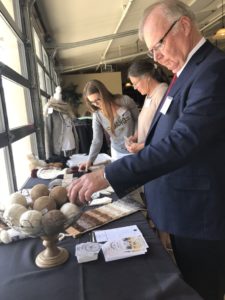
Idaho Department of Commerce Director, Tom Kealey, examines alpaca products from Grazing Hills Alpaca Ranch, Country Store and B&B in Viola, ID.
Washington is trying to help rural areas with this problem by establishing a statewide broadband office that would coordinate grants to governments and tribes for broadband infrastructure.
Washington 9th District Rep. Mary Dye, R-Pomeroy, told the Daily News in April that she and her colleagues in the House supported the legislation because it will increase competition in the internet service provider marketplace and bring better service to rural Washington.
In Idaho, Gov. Brad Little signed an executive order in May establishing the Idaho Broadband Task Force, Kealey said.
The 40-member task force this fall will bring to the governor recommendations on ways the state can improve connectivity and speeds across Idaho.
The task force will try to map existing services and gaps in broadband infrastructure, which Kealey said will paint a picture for what resources are needed in rural and urban areas.
“We want to map what we have, be able to measure what we have in terms of access as well as speeds and features and services and options,” he said.
Brown pitched another idea that may bring people and commerce to eastern Washington. In light of Microsoft and other corporations last year offering funding to build a high-speed railway from Vancouver, British Columbia, to Portland, Brown said she would like to see a similar railway that connects western Washington with eastern Washington.
“How fantastic that would be to connect our communities, to connect our students and families, and also as an opportunity for people to be able to leave the megalopolis and see what the options are in other parts of the state,” Brown said.
Brown and Kealey highlighted some positives in Washington and Idaho economies.
“If we were a country, we’d be up there with Sweden or Belgium right now,” he said.
Kealey said Idaho is near the top of the rankings in several economic categories including first in travel dollars, third in the number of people moving to the state and fourth in job growth.
This article first appeared on April 9, 2019 in The Coeur d’Alene Press. By staff writer Brian Walker.
COEUR d’ALENE — Jon Ness invited two relatively new Kootenai Health employees to the podium on Monday to illustrate how health care has led the local economic development charge in recent years — and given young folks an opportunity to live here.
The Kootenai Health CEO was the keynote speaker on “Our Health Industry: The Heartbeat of New Jobs” during the Coeur d’Alene Area Economic Development Corporation’s annual meeting attended by a record 409 people at The Coeur d’Alene Resort.
Sharing their job stories up front with Ness were Caiti Bobbitt, a public affairs strategist, and Kyle Guice, a security officer.
“Personally, it’s allowed me to be there for my family in ways I never imagined,” Bobbitt said of her job. “It’s also allowed me to build relationships that will last a lifetime. Professionally, it’s given me a profound sense of community that I wouldn’t have gotten back in Phoenix.”
Guice said his position allowed him to return to Coeur d’Alene, where he was raised.
“I love the outdoors and fishing,” he said. “I’ve bounced around a bit with college basketball, so this has given me the perspective of how nice it is to be back in Coeur d’Alene.”
Bobbitt and Guice represent a trend in which the health care industry has become a major player for job creation in recent years compared to when Ness arrived in 2010. Back then, Kootenai County’s unemployment rate was 12 percent.
“There was very little construction, housing sales were low, the hospital wasn’t really growing, yet we had an unbelievable community we live in,” Ness said. “Our quality scores [at the hospital] were average. That is not a formula for growth.”
But Kootenai Health, thanks to community growth and internal culture shifts, is now roaring.
The independent, community-owned hospital grew from 1,800 jobs in 2011 to 3,300 today.
“In some ways, we can’t recruit fast enough,” said Ness, adding that the company has 230 job openings.
Idaho is among 16 states in which health care is the largest employer.
Ness said the culture shift at Kootenai Health started mandatory two-hour training sessions with all employees and the crafting of a vision statement — one that saw Kootenai Health being recognized nationally for excellence.
Ness said many employees several years ago were surprised that Kootenai Health’s ratings were at the bottom, compared to other hospitals in the region.
“That got their attention,” he said. “Maybe we weren’t as good as we thought we were.”
Ness said the culture shift, which includes annual employee engagement surveys, has led to Kootenai Health being honored nationally by several organizations.

Gynii Gilliam, the economic development corporation’s president, encouraged business leaders to explore ways to piggyback onto Kootenai Health’s momentum.”This is so doable; let’s get to it. Let’s help the health care sector make an even bigger impact. We can do this.”
Ness said he believes Kootenai Health, which became an affiliate of the prestigious Rochester, Minn.-based Mayo Clinic in 2014, can continue to be an economic development force for years to come. It has a great example to follow in the Mayo Clinic, which hopes to create 50,000 new jobs over the next 25 years with investments from the public and private sectors and the health care organizations.
Ness said he believes a similar scenario can occur here, especially since this is a recreation paradise, the region’s proximity to Canada, the population of the counties are comparable; and because of Rochester’s somewhat remote location and the fact that North Idaho’s winters aren’t as harsh as Minnesota’s.
“We have fantastic physical amenities, wonderful resources and this is the most hospitable community I have ever been to,” Ness said. “Health care is growing, but what if we had a vision to do something like that?”
Gynii Gilliam, the economic development corporation’s president, encouraged business leaders to explore ways to piggyback onto Kootenai Health’s momentum.
“This is so doable; let’s get to it,” she said. “Let’s help the health care sector make an even bigger impact. We can do this.”
Idaho Gov. Brad Little said Kootenai Health’s success of providing opportunities for young families is part of the transformation from the state’s traditional roots of mining, timber and agriculture.
The average age of Kootenai Health employees is 41.
Little said North Idaho’s proximity to Canada, recreation and clean air and water also opens economic development possibilities.
“We need to create an atmosphere where people want to stay in Idaho,” Little said. “Strong families are what we are in Idaho and what people look for when they come here.”

